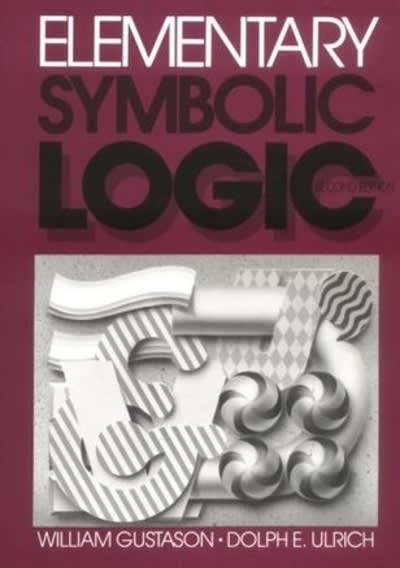Question
1. Answer the following questions based on rolling a single six-sided die. (2 points for each part) a) If you roll a single die and
1. Answer the following questions based on rolling a single six-sided die. (2 points for each part) a) If you roll a single die and count the number of dots on top, what is the sample space of all possible outcomes? Are the outcomes equally likely? b) Assign probabilities to the outcomes of the sample space of part (a). Do the probabilities add up to 1? Should they add up to 1? Explain. c) What is the probability of getting a number less than 4 on a single throw? d) What is the probability of getting a 3 or 4 on a single throw? 2. You draw two cards while playing Blackjack from a standard deck of 52 cards without replacing the first one before drawing the second. (2 points for each part) a) Are the outcomes on the two cards independent? Why? b) Find P(ace on first card and king on second) c) Find P(king on first card and ace on second) d) Find the probability of drawing an ace and a king in either order 3. You have three pancakes. One is golden on both sides, one is brown on both sides and one is golden on one side and brown on the other. You choose one pancake at random and see that one side is brown. Find the probability that the other side of the pancake is brown. (4 points) 4. You wish to play a three-number lottery with your favorite data 8, 2 and 5. After a number is drawn, the number is placed back in the container for the next draw. What is the probability that the three winning numbers will be 8, 2 and 5? Are the numbers independent of each other? How would the probability change if no repetition is allowed? (4 points) 5. Have you ever tried to get out of jury duty? About 25% of those called will find an excuse to avoid it. If 12 people are called for jury duty, (2 points for each part) a) What is the probability that all 12 will be available to serve on the jury b) What is the probability that 6 or more will not be available to serve on the jury c) Find the expected number of those available to serve on the jury. What is the standard deviation 6. Create a probability distribution for a coin flipping game. That is, toss a coin at least 25 times and keep up with the number of heads and the number of tails. (8 points for each part) a. Compile your data into a probability distribution. Be sure to show that your distribution meets the properties for a probability distribution. b. Use a bar graph to graph the distribution. c. Explain the random variables for your data. d. Did the values come out as you would expect? Explain what you would expect to happen with the outcome of the game versus the actual expected value of your distribution. 7. Use your example from question 6 to set up a binomial distribution. Find the probability based on your data that if the coin is flipped 25 times, what is the probability that a heads would appear 10 times or less. (10 points) 8. The following information has been given that shows the highest level of education received by employees of a company. (2 points for each part)
| # Employees | |
| Ph.D. | 8 |
| Master's | 21 |
| Bachelor's | 33 |
| Associate | 18 |
| High School Diploma | 7 |
| Other | 2 |
Answer the following questions based on the data in the table: a. Find the probability an employee chosen at random has a Ph.D. b. Find the probability an employee chosen at random has an Associate degree. c. Find the probability an employee chosen at random does not have a Ph.D. d. Are the events independent? Explain.
Step by Step Solution
There are 3 Steps involved in it
Step: 1

Get Instant Access to Expert-Tailored Solutions
See step-by-step solutions with expert insights and AI powered tools for academic success
Step: 2

Step: 3

Ace Your Homework with AI
Get the answers you need in no time with our AI-driven, step-by-step assistance
Get Started


